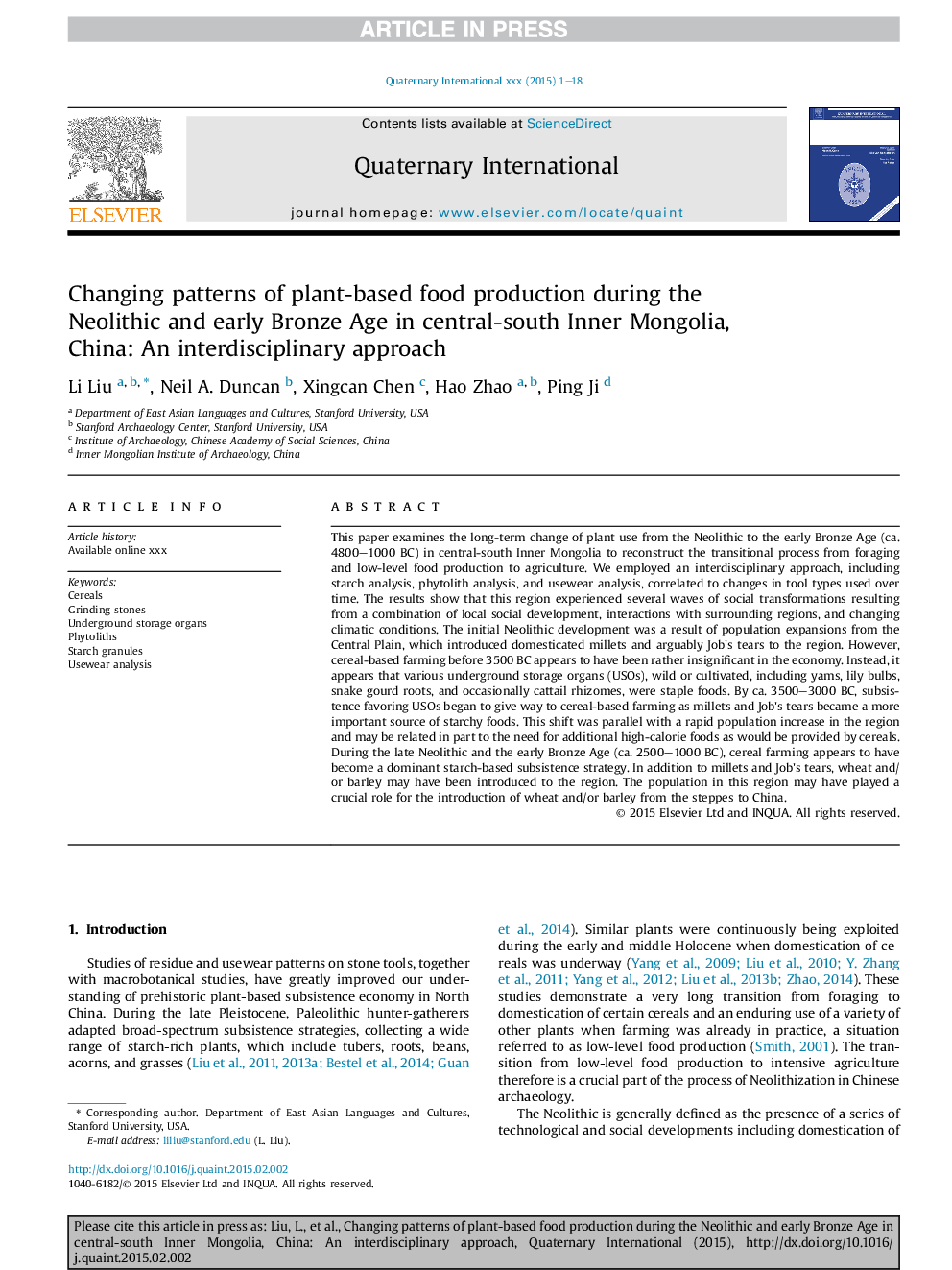| کد مقاله | کد نشریه | سال انتشار | مقاله انگلیسی | نسخه تمام متن |
|---|---|---|---|---|
| 5114086 | 1484088 | 2016 | 18 صفحه PDF | دانلود رایگان |
عنوان انگلیسی مقاله ISI
Changing patterns of plant-based food production during the Neolithic and early Bronze Age in central-south Inner Mongolia, China: An interdisciplinary approach
ترجمه فارسی عنوان
تغییر الگوهای تولید مواد غذایی گیاهی در دوران نوسنگی و زود هنگام برنز در مغولستان مرکزی و جنوب چین: رویکرد بین رشته ای
دانلود مقاله + سفارش ترجمه
دانلود مقاله ISI انگلیسی
رایگان برای ایرانیان
کلمات کلیدی
غلات، سنگهای سنگزنی، اندام های ذخیره سازی زیرزمینی، فیتولیت، گلوله نشاسته، تجزیه و تحلیل استفاده لباس،
موضوعات مرتبط
مهندسی و علوم پایه
علوم زمین و سیارات
زمین شناسی
چکیده انگلیسی
This paper examines the long-term change of plant use from the Neolithic to the early Bronze Age (ca. 4800-1000Â BC) in central-south Inner Mongolia to reconstruct the transitional process from foraging and low-level food production to agriculture. We employed an interdisciplinary approach, including starch analysis, phytolith analysis, and usewear analysis, correlated to changes in tool types used over time. The results show that this region experienced several waves of social transformations resulting from a combination of local social development, interactions with surrounding regions, and changing climatic conditions. The initial Neolithic development was a result of population expansions from the Central Plain, which introduced domesticated millets and arguably Job's tears to the region. However, cereal-based farming before 3500Â BC appears to have been rather insignificant in the economy. Instead, it appears that various underground storage organs (USOs), wild or cultivated, including yams, lily bulbs, snake gourd roots, and occasionally cattail rhizomes, were staple foods. By ca. 3500-3000Â BC, subsistence favoring USOs began to give way to cereal-based farming as millets and Job's tears became a more important source of starchy foods. This shift was parallel with a rapid population increase in the region and may be related in part to the need for additional high-calorie foods as would be provided by cereals. During the late Neolithic and the early Bronze Age (ca. 2500-1000Â BC), cereal farming appears to have become a dominant starch-based subsistence strategy. In addition to millets and Job's tears, wheat and/or barley may have been introduced to the region. The population in this region may have played a crucial role for the introduction of wheat and/or barley from the steppes to China.
ناشر
Database: Elsevier - ScienceDirect (ساینس دایرکت)
Journal: Quaternary International - Volume 419, 17 October 2016, Pages 36-53
Journal: Quaternary International - Volume 419, 17 October 2016, Pages 36-53
نویسندگان
Li Liu, Neil A. Duncan, Xingcan Chen, Hao Zhao, Ping Ji,
